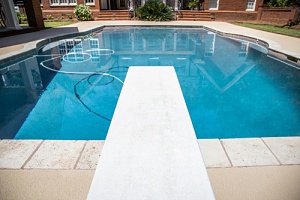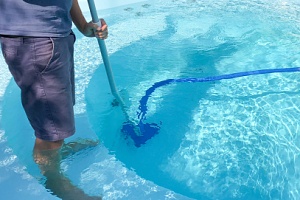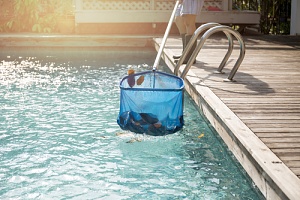 Homeowners with pools often find themselves dealing with maintenance concerns that cost them more time and money than they are willing to dedicate to repairs. These problems can injure swimmers, cause illnesses, and cost hundreds of dollars in repairs and additional maintenance. For many homeowners, simply removing the pool is the best solution. Here are some common swimming pool problems to look out for and a few reasons to consider finally having it removed from your backyard before repair costs and liabilities add up.
Homeowners with pools often find themselves dealing with maintenance concerns that cost them more time and money than they are willing to dedicate to repairs. These problems can injure swimmers, cause illnesses, and cost hundreds of dollars in repairs and additional maintenance. For many homeowners, simply removing the pool is the best solution. Here are some common swimming pool problems to look out for and a few reasons to consider finally having it removed from your backyard before repair costs and liabilities add up.
Winter Worries
One of the biggest hurdles for pool owners is maintaining the pool during the offseason. Failing to properly close the pool for the winter can cause frozen pipes, cracked liners, and debris to enter the pool. These problems, in turn, can cause flooding and other issues, including dirty and dangerous water building up in the pool. Cracked liners can cost hundreds of dollars to repair, and the subsequent water damage to your yard can run you hundreds more. To avoid winter problems, be sure to close your pool correctly or hire a professional pool specialist for help, and clear snow and other debris from the cover before it has a chance to cave in.
Algae Buildup
Algae grows in pools that have not been properly maintained or cleaned over a long period of time. The growth contaminates your water and can cause an unpleasant smell, preventing people from being able to enjoy the pool or the backyard. To fix this problem, you will need to shock your pool by pouring in a large amount of chlorine and cleaning out most of the algae with a pool brush, which can be a labor intensive process. Be sure to check filters and other equipment to ensure that they are working properly to prevent additional algae growth.
Clogged or Overused Filters
If your pool water seems to be getting dirty or cloudy despite regular cleaning and maintenance, it may be time to check on your filter. Clogged or overused filters will not work properly, causing dangerous buildup in the pool. The filter can often be cleaned easily by being sprayed with a hose until cleared. However, filters that do not return to normal operation with cleaning may need to be repaired or replaced. While a filter cartridge costs under $100 to replace, purchasing a new filter entirely can cost as much as $600.
Stained Interiors
 Orange stains are another common pool dilemma. If you notice this occurring, it is likely to be rust caused by cracks in the pool foundation or an excess of metal somewhere in the pool. While these stains can be easily cleaned, they can cloud the pool water and make for an unpleasant swimming experience. It is therefore important to identify the source of the stain and remove the metal or patch up the foundation as quickly as possible. Foundation cracks are particularly dangerous, as they threaten the integrity of the pool’s entire structure and allow water to cause additional damage by seeping into the foundation of your backyard or home.
Orange stains are another common pool dilemma. If you notice this occurring, it is likely to be rust caused by cracks in the pool foundation or an excess of metal somewhere in the pool. While these stains can be easily cleaned, they can cloud the pool water and make for an unpleasant swimming experience. It is therefore important to identify the source of the stain and remove the metal or patch up the foundation as quickly as possible. Foundation cracks are particularly dangerous, as they threaten the integrity of the pool’s entire structure and allow water to cause additional damage by seeping into the foundation of your backyard or home.
Poor pH
Swimmers complaining about burning sensations in their eyes, throat, or skin after swimming may be pointing to a pH imbalance in the pool’s water. Generally, the discomfort is caused by improper levels of chlorine and ammonia, which can be remedied by checking the pH balance and adjusting the chemicals used as necessary. The pH levels in your pool should be between 7.2 and 7.6 for safe swimming, so be sure to regularly check the balance and add more chemicals as necessary. Irritation can occur if the balance is above or below the correct range, and you should always have extra chemicals on hand to quickly adjust the balance and make the pool safe for swimming again.
Rough Edges
Older pools, particularly ones with floors made of concrete or tile, can develop a scratchy or cracked surface over time. This can cause small scrapes or more serious injuries to swimmers, making your pool an even bigger liability. The abnormal surface could be caused by calcium buildup, which requires the use of more chemicals to resolve, or by the way the pool was initially installed. Having the interior of the pool professional smoothed is an expensive process that may take up more of your pool maintenance budget, but it can be a necessary one for people to enjoy using your pool again.
Damaged Ladders and Boards
 Faulty equipment does not just happen to filters and other cleaning elements. Your pool ladders, diving boards, and other pieces of equipment can rust or crack over time, resulting in potentially serious injuries. It is necessary to test all equipment at the beginning of the season, after it has been in storage for the winter, to ensure that the cold has not caused any damage. Keeping track of this equipment’s status throughout the swimming season is also imperative for a safe summer. If you notice any damage, the pool should be considered off limits until it has been repaired.
Faulty equipment does not just happen to filters and other cleaning elements. Your pool ladders, diving boards, and other pieces of equipment can rust or crack over time, resulting in potentially serious injuries. It is necessary to test all equipment at the beginning of the season, after it has been in storage for the winter, to ensure that the cold has not caused any damage. Keeping track of this equipment’s status throughout the swimming season is also imperative for a safe summer. If you notice any damage, the pool should be considered off limits until it has been repaired.
Considering a Pool Removal
For many homeowners, the risk of serious damage to their pool outweighs any enjoyment they and their families get from having the pool. In these cases, it may be time to consider a pool removal. The process can take anywhere from a few days to a full week, depending on the type of removal needed, and cost up to $5,000, about the same as it costs to maintain and repair a pool each year. Over time, the initial investment of the pool removal can save you thousands of dollars and allow you to enjoy your yard without worrying about repairs.
Contact Dirt Connections for more information about pool removals. Dirt Connections’ contractors have years of experience in helping homeowners remove their pools and the stress that comes with them. The company provides free consultations to help you choose between a partial or full pool removal and can complete either kind in a timely manner, leaving your yard clean and your pool filled in as quickly as possible.








































